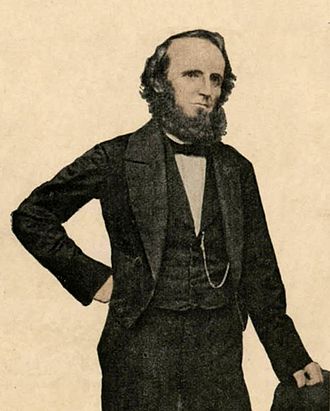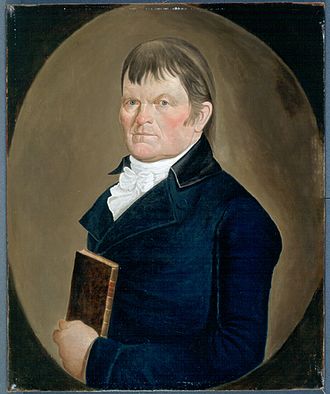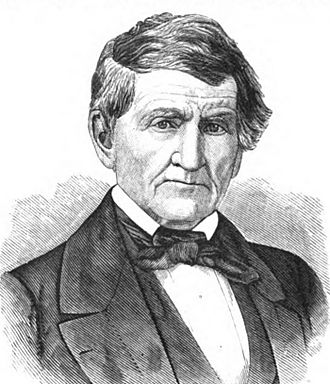Discover Your Roots
SIGN UPDiscover Your Roots
SIGN UPGamaliel is a male name of Hebrew origin, meaning "God Is My Reward." In Jewish tradition, Gamaliel the Elder was a prominent authority in the Sanhedrin and a revered teacher of Jewish Law. He is recognized for his wisdom and leadership, with a reputation for being one of the greatest teachers in Judaism. In the Christian tradition, Gamaliel is depicted as a Pharisaic doctor of Jewish Law and is mentioned in the New Testament as the teacher of Paul the Apostle. There are also references to a hypothetical "Gospel of Gamaliel," and ecclesiastical tradition claims that he embraced the Christian faith. Gamaliel is revered as a saint in the Eastern Orthodox Church and is commemorated on August 2. His legacy encompasses a rich history of religious and scholarly significance, making the name Gamaliel a symbol of wisdom, faith, and revered leadership.

Gamaliel Bailey (1807–1859) was an American physician turned abolitionist journalist, editor, and publisher known for his unwavering commitment to the anti-slavery movement. Born in New Jersey, Bailey initially pursued a medical career but transitioned into journalism in Cincinnati and Washington, D.C. He played a pivotal role in the publication of anti-slavery articles and supported the serialization of Harriet Beecher Stowe's iconic novel, "Uncle Tom's Cabin." Bailey's dedication to the cause led to numerous attacks on his offices by pro-slavery mobs. Notably, he underwrote the expenses of Dred Scott's Supreme Court case and sought contributions from Republican members of Congress. Tragically, Bailey passed away at sea while en route to Europe at the age of 51. His legacy lives on through his influential writings and his unwavering dedication to the abolitionist movement.

Gamaliel Díaz Magaña, born on 14 February 1981, is a renowned Mexican professional boxer who made a significant impact in the boxing world. His impressive career includes holding the WBC super featherweight title from 2012 to 2013. Notably, Díaz secured the NABF Featherweight Championship by upsetting the undefeated Mexican American future champion, Robert Guerrero, in December 2005. He also handed the Dominican fighter Elio Rojas his first loss in a WBC Featherweight Title Eliminator. One of his remarkable achievements was defeating Takahiro Ao, the Japanese champion, in a 12 round unanimous decision to claim the WBC Super Featherweight title in December 2012. Díaz's professional journey was filled with intense battles and victories, showcasing his resilience and determination in the ring. Despite facing setbacks, his contributions to the sport have left an indelible mark.

Gamaliel Painter (May 22, 1742 – May 21, 1819) was an influential American figure in the founding of Middlebury, Vermont, and Middlebury College. Born in New Haven, Connecticut Colony, he later settled in Middlebury, Vermont, where he played various roles, including soldier, jurist, sheriff, and state representative. Notably, Painter was involved in the founding of Middlebury College and left a significant legacy to the institution. His bequest, totaling $13,000, and his walking cane, which serves as the institutional mace for official events, exemplify his enduring impact.Painter's contributions to the development of Middlebury, Vermont, were substantial, as he purchased land, built mills, and contributed to the construction of public buildings. Additionally, he served in several political offices, further solidifying his influence in the region. Despite personal hardships, including the loss of family members, Painter's dedication to Middlebury College and the town of Middlebury was unwavering, leaving a lasting imprint on the community.His association with Middlebury College remains a significant part of his legacy, as his bequest and walking cane continue to symbolize his enduring impact on the institution and its students. Painter's remarkable contributions to the founding and development of Middlebury, Vermont, and Middlebury College ensure his place in American history.

Gamaliel Henry Barstow (July 20, 1784 – March 30, 1865) was a multifaceted personality, known as a physician, American politician, judge, and U.S. representative for New York. Born in Sharon, Litchfield County, Connecticut, he ventured into politics and public service, leaving a lasting impact on the state's political landscape. Barstow's career was diverse, marked by his roles as a member of the New York State Assembly, First Judge of the Tioga County Court, and a member of the New York State Senate. He also served as the New York State Treasurer and was elected as a U.S. Representative for the twenty-fifth district of New York. Despite his political engagements, Barstow maintained a connection to his roots, engaging in agricultural pursuits in Nichols, New York, where he eventually passed away at the age of 80. His contributions to medicine, politics, and agriculture solidify his legacy as a prominent figure in New York's history.

Gamaliel Smith Olds, born on February 11, 1777, in Tolland, Massachusetts, was a prominent Congregational minister and educator. After graduating from Williams College in 1801, he pursued a career in academia, serving as a tutor and later being elected professor of mathematics and natural philosophy. While his tenure in this role was brief, Olds remained dedicated to scholarly pursuits and theological studies, eventually becoming ordained as a co-pastor in Greenfield, Massachusetts. His passion for education led him to hold professorial positions at prestigious institutions such as the University of Vermont, Amherst College, and the University of Georgia.Olds was a published author, known for his works such as "Inaugural Oration at Williams College" (1806) and "The Substance of several Sermons upon the subjects of Episcopacy and Presbyterian Purity" (1815). His contributions to academia and theology left a lasting impact, and his legacy continues to be remembered. Tragically, he passed away on June 13, 1848, following an accident in Circleville, Ohio. Gamaliel Smith Olds' life and work are commemorated in historical records, emphasizing his significant role in the realms of education and religious discourse.
All images displayed on this page are sourced from Wikipedia or Wikimedia Commons.We use these images under their respective Creative Commons or public domain licenses. Wherever applicable, author attributions and license information are provided. If you believe an image is used incorrectly or outside its license terms, please contact us so that we can review and correct the issue.